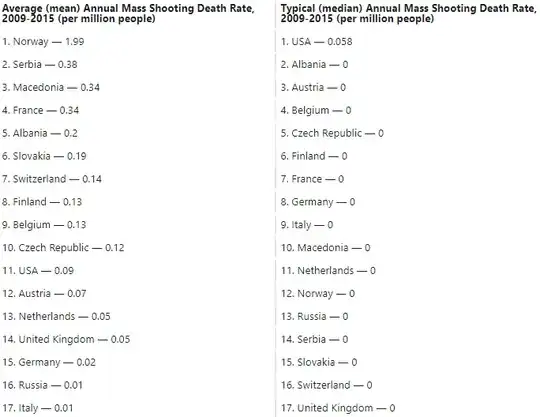TL;DR? The USA has so many mass shootings that the average deaths-per-shooting is lower than other places.
Let's break down what he's calculating: The rates of murder from mass public shootings per million people.
This means that, when there is a mass shooting(1) in public(2), that if we account for population(3), more people are murdered(4) .
By using a baseline of one mass shooting = one mass shooting, he's already removed the point of contention: that the USA has many more mass shootings than anywhere else in the world. So already, Norway with one mass shooting is being equalized with the USA, with hundreds.
By specifying in public, he skews things even more in his favor. The United States does not currently have major conflicts or wars on its own soil, which he is counting towards this metric. Anecdotally, more people die in public than in private in a war, though I can't find any statistics to back that up.
By making it per million people, the fact that the USA has 360-odd million people is used as an advantage against smaller European countries.
More people are murdered: this is the thing he's measuring. IF there's a mass shooting, and IF it's in public, how many people die? Norway has had one mass shooting. In it, 69 people died. That's 69 murders (69/1) per mass shooting. Whereas in the US, we've had 155 mass shootings and 1107 killed. That's 7.14 (1107/155) murders per mass shooting.
This has generated a bit of confusion, so here's a simple example:
Let's use apples. I'm a farmer, and the local kids have been stealing my apples. They've stolen 100 apples over 10 incidents, for 10 per incident. However, the rats once got in and ate 15 apples. Does that make the rats a bigger threat, or the kids? I'd argue the kids (the US). They'd argue the rats (Norway).
